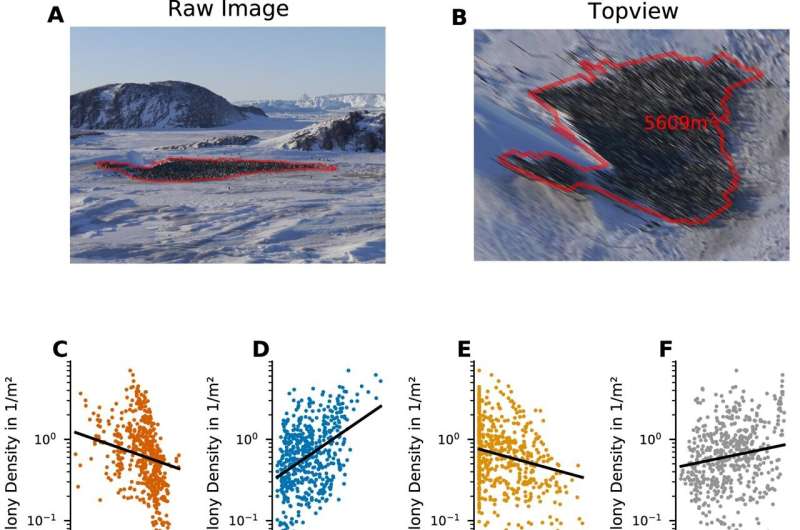This article has been reviewed according to Science X's editorial process and policies. Editors have highlighted the following attributes while ensuring the content's credibility:
fact-checked
peer-reviewed publication
trusted source
proofread
Scientists count emperor penguins in the Antarctic to investigate factors affecting population

Emperor penguins are an endangered species. Scientists are protecting the largest of all penguins by monitoring their numbers precisely and investigating which factors affect their population. A team led by researchers at Friedrich-Alexander-Universität Erlangen-Nürnberg (FAU) has now developed a reliable method that can predict the number of breeding pairs and chicks and serve as an early warning system for climate change in the Antarctic Ocean.
The research team has published its findings in the journal Nature Communications.
Monitoring the global population of emperor penguins is a major challenge, as they inhabit Antarctica's harsh and remote environment. Over the last two decades, researchers have been using satellite imagery, among other technologies, to keep track of this threatened species. While it has provided valuable population data, the counts to date are still inconsistent and unreliable for a variety of reasons.
The first is that satellite images can only be taken between October and April because there isn't enough light in the polar winter to capture the species at their breeding sites. A further challenge is that the number of penguins present at a colony can vary significantly, as adults may come and go, and the technology is not capable of monitoring chicks.
Researchers combine satellite imagery and knowledge of penguin behavior
What the new method accomplishes is to use satellite imagery in conjunction with phenological and behavioral models to monitor the penguin population. "This means taking into consideration seasonal and conditional occurrences that may be taking place at the time a satellite image is captured," says Daniel Zitterbart, one of the study's senior authors and an associate scientist at Woods Hole Oceanographic Institution (WHOI, U.S.).
"In emperor penguins, for example, only the males incubate the eggs. The females remain in the sea throughout the entire incubation period—approximately 64 days—and only return after the eggs are hatched.
"How the penguins perceive the current temperature also plays a role—comparable to the perceived temperature in humans, which is influenced by wind or sunshine, among other things. When the animals huddle to keep warm, they stand closer together and the colony appears smaller."
Lead author of the study, FAU doctoral candidate Alexander Winterl, says, "If we combine the information from the satellite images with our knowledge of the behavior of emperor penguins, we can deduce much more precisely how many animals live in a colony.
"We compared our estimates with existing data sets collected over a period of 10 years in two emperor penguin colonies in the Antarctic. We can see that conventional methods can only measure trends over decades, but cannot show fluctuations within a year or a few years."
Early warning system for the health of the Southern Ocean
"We need the precise population data not only to protect this species, but also to make people aware of the extreme changes in the Southern Ocean and the effects of climate change," emphasizes Winterl.
"The rapid retreat of the ice on and around Antarctica is threatening their livelihoods. Previous modeling studies suggest that over 90% of emperor penguin colonies will disappear by 2100 without significant reductions in greenhouse gas emissions."
More information: Alexander Winterl et al, Remote sensing of emperor penguin abundance and breeding success, Nature Communications (2024). DOI: 10.1038/s41467-024-48239-8
Journal information: Nature Communications
Provided by Friedrich–Alexander University Erlangen–Nurnberg



















